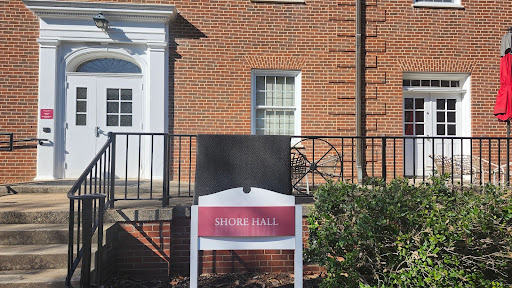As of March 2025, the U.S. Consumer Price Index indicated a 2.4% annual increase, with food prices up by 3%. Meanwhile, the average national gas price stood at $3.25 per gallon in April, according to LendingTree.
With grocery bills climbing and gas hovering over $3 a gallon, college students nationwide are feeling the inflationary heat — and Guilford students are no exception.
From tapping into support programs, to stretching out groceries, to taking on second jobs, students are navigating the strain of rising prices on top of tuition, housing and everyday college life.
Markayla Massenburg, a Guilford junior majoring in business, has found some relief through the federal Supplemental Nutrition Assistance Program (SNAP), often referred to as EBT.
“I applied for EBT, which is money the government gives to help people pay for groceries,” she said. “That helps a lot. Then the money I make is used for my car, school and other needs.”
Even with support programs in place, basic necessities have become harder to afford. Students like Dawson Kirkland, a Guilford freshman member of the baseball team majoring in accounting, say grocery runs and pump fill-ups now feel like luxuries.
“As a college student, most of my money is spent paying for tuition,” he said. “Spending money on gas and groceries almost depletes my budget every week.”
The challenge isn’t just the high price tag — it’s the constant trade-offs students must make. Once rent, tuition and textbooks are paid, there’s not much left for anything else.
“When you pay for housing and tuition, then books, it just depletes any chances of buying things I want,” Kirkland said. “These rising costs make it much harder for me to pay for things.”
To stay afloat, both Massenburg and Kirkland have made lifestyle changes. Eating out, driving and even stocking up on fresh groceries are all things they approach with caution.
“I definitely try to cut down on transportation since gas prices are so high,” Massenburg said. “And I cook more at home — less eating out.”
Dawson agrees, noting that rising food prices have affected even the most basic routines, including buying groceries and his time to have fun socializing.
“Instead of having fresh groceries every week, I sometimes have to go two weeks without groceries or stretch them out,” he said. “I’ve had many friends ask me to go out to eat, and I always have to turn them down — I just can’t afford to with all the other things I have to pay for.”
For now, Massenburg feels somewhat protected thanks to grants, scholarships and loans that keep her education covered.
“The rise in prices isn’t affecting me as much as others right now,” she said. “I am not too worried about these costs affecting me graduating.”
But for Kirkland, who relies on his loved ones and student loans, there’s worry that rising costs could affect his future.
“I’m a little worried as my parents and loans are my main way of paying for college,” he said. “If my parents end up struggling, I may not be able to afford college or the basic lifestyle of a college student.”
To make ends meet, Kirkland recently added a side hustle: a home run beyond the baseball field.
“The last couple weeks, I’ve started door dashing to try and make some more money,” he said. “This leaves me with little time for homework and cuts some hours of sleep, as I already play baseball for the school.”
For students like Massenburg and Kirkland, making it through college now means more than just passing classes — it means adapting to an economy that continues to fluctuate and heat up through saving and hustling.












